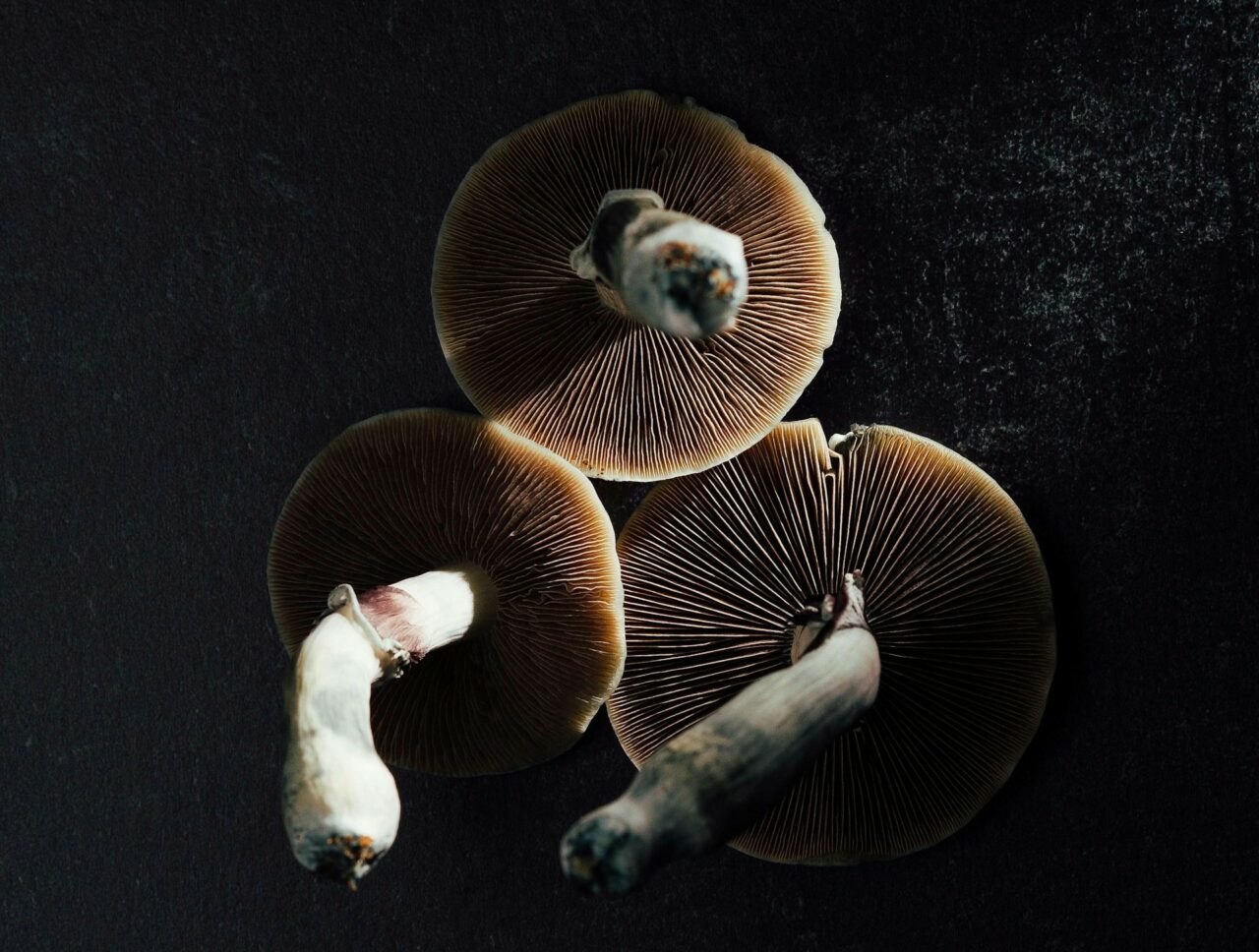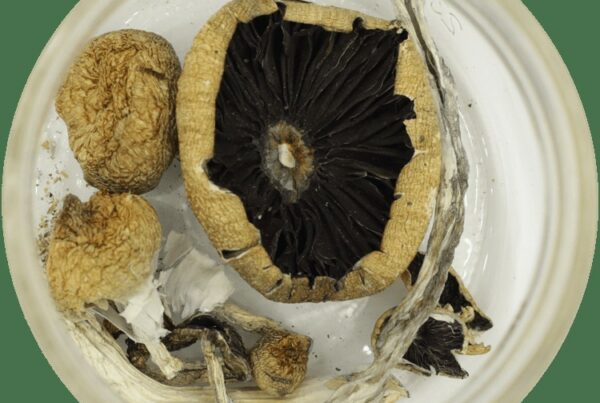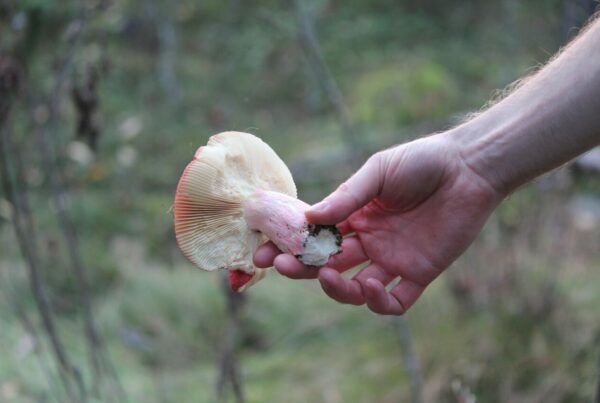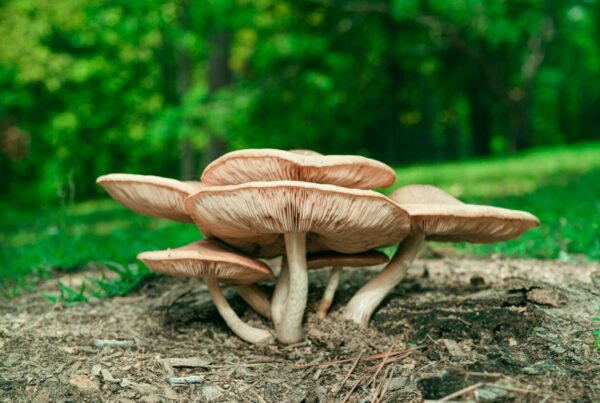As the attention towards natural magic mushrooms in Canada intensifies, there’s a concurrent rise in the demand for lab-manufactured psilocybin products. Many researchers opt for these products due to their guaranteed dosage. Yet, they might not realize that natural mushrooms may exhibit a higher potency than their lab-produced counterparts. Experts have pointed out notable disparities between the two, including varying potency levels.
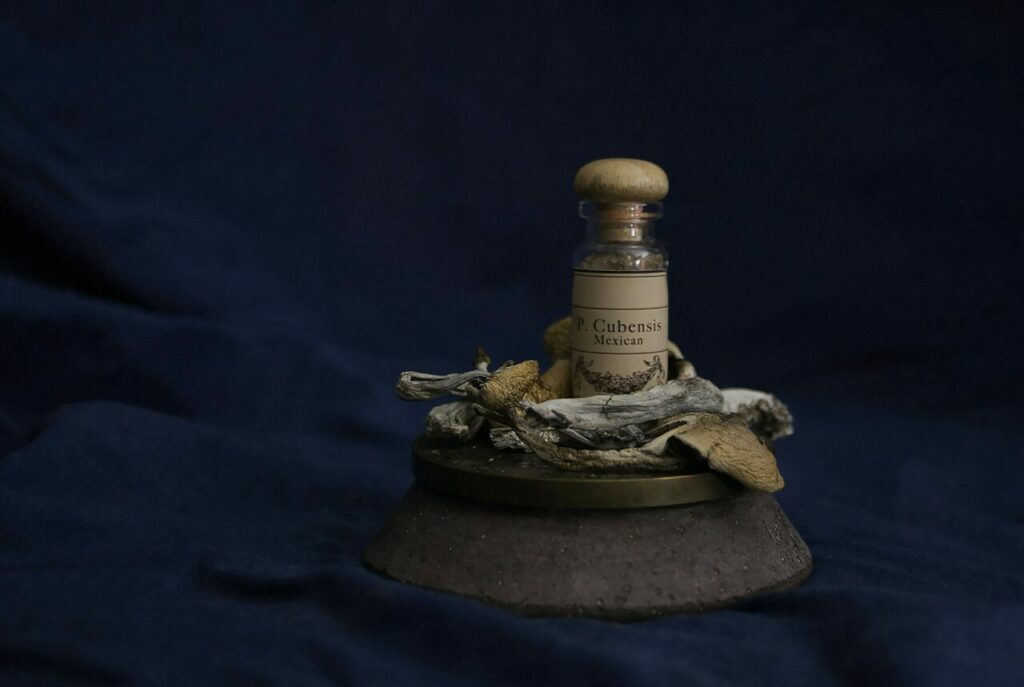
Key Takeaways:
- Over 180 varieties of natural mushrooms provide different potency levels, with the effects determined by the species, consumption method, cultivation, and individual tolerance.
- Synthetic psilocybin, an engineered version of the natural compound, is developed in regulated environments to maintain uniformity and purity for clinical research, primarily in mental health therapies.
- The combined effects of various compounds in psychedelic mushrooms, such as psilocin and baeocystin, can lead to a more profound and intense experience than a single compound alone.
Emerging Market: Psychedelics in Diverse Forms
The demand for psilocybin mushrooms in Canada is escalating, particularly for addressing specific mental health disorders such as OCD, depression, PTSD, and anxiety. In light of this evolving interest, provincial governments are starting to contemplate the decriminalization of recreational use.
In 2020, Canada approved restricted medical use of these mushrooms under certain prerequisites. The federal government granted permission to specific terminally ill patients to use these substances for symptom management just last year.
Such progressive steps have triggered the introduction of synthetic psychedelics.
The Ongoing Debate
The persistent discussion about natural versus lab-crafted psychedelics revolves around matters of safety, accessibility, and expense.
Many contend that natural psychedelics provide a more comprehensive and traditional experience. Conversely, supporters of lab-created versions emphasize their capability for standardization for medical purposes, along with guaranteed dosage control and quality assurance.
While lab-made psychoactive substances could enhance accessibility, apprehensions about potential drug monopolization still exist. Critics argue this could lead to less increased expenses for users.
/wp:paragraph –>Getting to Know Psilocybin: A Comprehensive Overview
Psilocybe cubensis, a species of magic mushroom, is among the many psychedelic substances found in nature today. Magic mushrooms come in a variety of strains such as Golden Teachers, Amazonian Cubensis, Blue Meanies, and others. However, the most well-known family of these is Psilocybe cubensis, renowned for their psychoactive properties.
Grasping the Psychedelic Procedure
Psilocin, a compound derived from this mushroom, changes into a different chemical when metabolized by the liver. This transformed compound interacts with serotonin receptors in the brain, particularly the 5-HT2A receptor.
This receptor is instrumental in mood modulation, cognitive operations, and perception. Its interaction with the transformed compound alters the usual functioning of serotonin pathways, resulting in changed visual and auditory perception, modifications in thought processes, and emotional states. This interaction induces elevated mood, enhanced creativity, self-reflection, and the distinctive “psychedelic” experiences.
Two Main Categories
| Natural | Occurring in over 180 species of fungi, the efficacy varies depending on the mushroom species. Psilocybe cubensis is a prevalent species. The effects can vary according to consumption methods, cultivation techniques, and individual tolerance. |
| Synthetic | Produced in labs and chemically identical to natural compounds. They are synthesized in controlled environments to maintain consistency and purity. These are increasingly being explored for potential clinical use, particularly in mental health treatments. |
Comparing Nature’s Gift and Science’s Creation: The Fundamental Differences
Native versions of these substances are found in certain types of magic mushrooms. Indigenous communities in North and South America have traditionally used these mushrooms in their rituals and ceremonies, viewing them as sacred or divine.
- Derived from plants and mushrooms
- Employed in ancient rituals and healing traditions
- The unique genetic composition of each strain influences its potency
On the other hand, a
synthetically produced drug is
A specific compound’s natural chemical structure is closely mimicked by these substances. Expertly constructed in controlled settings by professionals, these drugs ensure precision. They function similarly to natural drugs yet can alter the overall psychedelic experience.
- Constructed by adept pharmaceutical experts
- Recent advancements tailored for medicinal usage
- Defined potency due to standardized manufacturing processes
Natural substances provide more benefits because of their bioactive compounds. Different mushroom types can have a variety of psilocybin levels and other compounds, which can lead to a range of effects.
Research Findings
Research undertaken at Hebrew University revealed that psychedelic mushrooms have a longer and more potent impact on synaptic plasticity than their synthetic counterparts. The research group investigated the drug’s influence on the brain activity of mice by analyzing behavioral and specific brain chemical changes.
The research discovered that the extract decreased head twitches and promoted the growth of new brain connections. This suggests that mushroom extract might provide more advantages than a single compound.
The researchers also introduced the “entourage effect” concept. They described this as a situation where the combined effect of various compounds in psychedelic mushrooms could be more potent than the effects of individual compounds. In the case of mushrooms, psilocin, baeocystin, and other tryptamines might cooperate to create a profound experience.
These additional chemicals are absent in laboratory-produced substances, which may result in slight variations in effects, even if the psychedelic content is the same.
Expert Opinions on the Superiority of Natural Substances
Research consistently suggests that psilocybin—in any form—shows promising results in treating a range of psychiatric disorders. A 2024 study explored the effects of controlled substances on patients suffering from treatment-resistant depression and found a reduction in symptoms after administering magic mushrooms.
When used alongside other treatments, organic psychedelics could potentially facilitate deeper emotional processing and insights during therapy sessions, thus enhancing long-term results.
Researchers from the same institution have noted that hallucinogenic mushrooms boost synaptic plasticity. They possess a unique metabolic profile that affects oxidative stress and energy production pathways, unlike lab-produced psychedelics.
Market Consequences
The growing body of research on this subject could shape Canadians’ perspectives and buying behaviors related to psychedelics. Early efforts by Health Canada, including the Special Access Program, seem to be laying a strong foundation for legalization and a shift in the therapeutic landscape. Psilocybin-assisted therapy could become a dominant treatment method in the near future.
Organic options are likely to become increasingly vital in clinical trials and therapeutic settings. As the country moves closer towards fully unlocking the potential of organic psychedelics, significant progress in mental health treatments appears to be on the horizon.
Instructions for Safely Acquiring Shrooms in Canada
- Via Section 56 Exemption: Health Canada recognizes that patients with severe medical conditions may utilize psilocybin as an alternative form of therapy. This exemption is part of the Controlled Drugs and Substances Act.
- Clinical Trials: Initial clinical trials have been authorized to investigate the drug’s potential for treating mental health disorders. Participants must meet specific criteria and pass a physician’s assessment.
- Online Market: Psilocybin capsules or edibles can be purchased from online sellers in Canada, but it’s essential to buy from reliable providers.
Uncover the Strength of Natural Compounds
Nature is brimming with marvels, among which shrooms are one. Rather than turning to synthetic psychedelics, think about using naturally potent magic mushrooms from Canada. They’re strong and therapeutic. Discover the best, naturally extracted shroom strains at Momentum Mushroom Canada.
The shrooms we have up for grabs not only meet the standard but exceed it by maintaining their purest and most genuine composition in a dried form. Place your order today and have your chosen products conveniently and discreetly shipped to your front door.
Frequently Asked Questions
What are baeocystin and norbaeocystin?
Baeocystin and Norbaeocystin are both tryptamine or indole alkaloids. They are chemically akin to psilocybin. These tryptamine derivatives act as secondary alkaloids in shrooms, adding to the overall psychedelic experience, though to a lesser extent. Baeocystin and Norbaeocystin have a similar chemical structure but differ in their psychoactive effects.
Are organic dried mushrooms found in capsules and edibles?
The experience may vary depending on the source. Online Dispensaries offer products abundant in organic compounds that facilitate the full entourage effect. In contrast, synthetic compounds, commonly seen in capsule form, are typically used in clinical trials and medical clinics.
Can natural psychedelics lead to more intense experiences?
Keep in mind that expecting a profound experience from a natural psychedelic may indeed contribute to such an outcome. After all, our expectations or the ‘set’ can guide the journey. Natural psychedelics, often linked to ceremonial traditions, can provide uniquely rewarding experiences. These experiences differ in many aspects from those involving synthetic compounds in a clinical setting.

